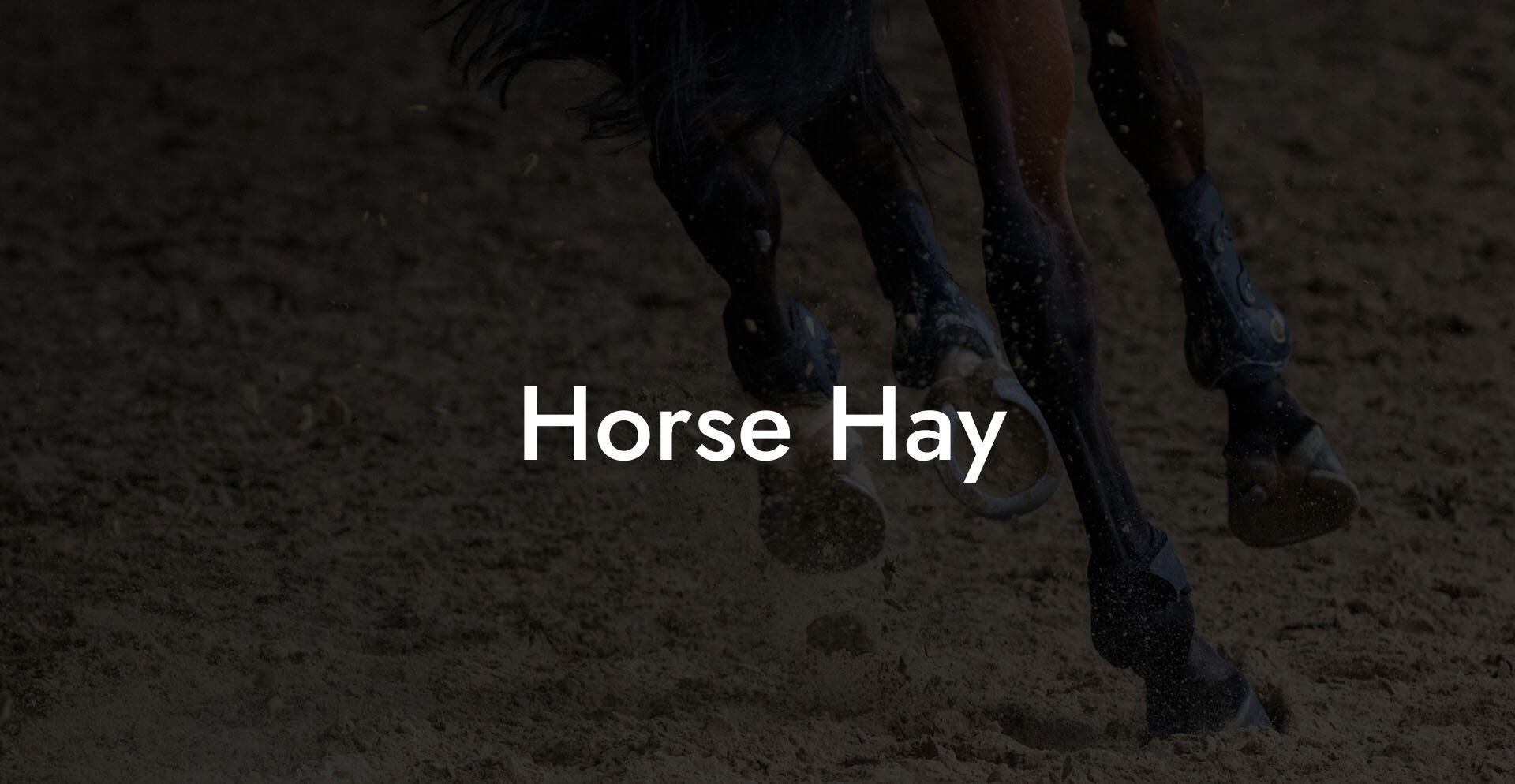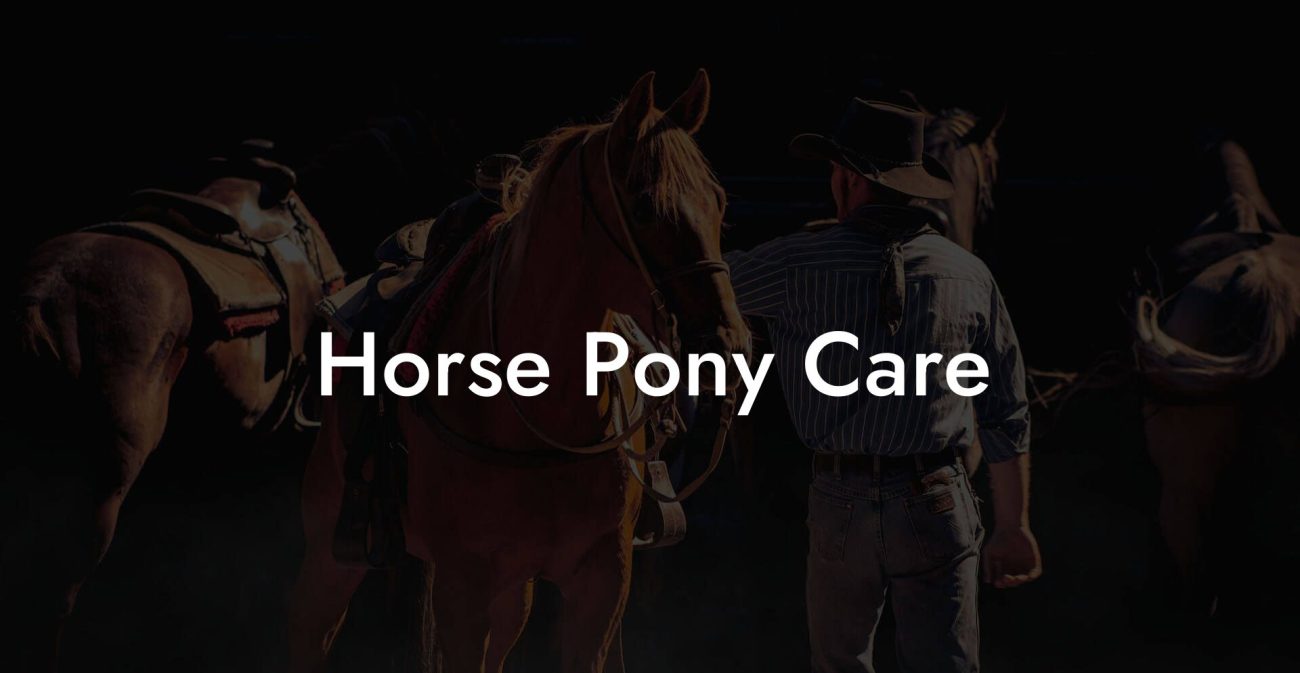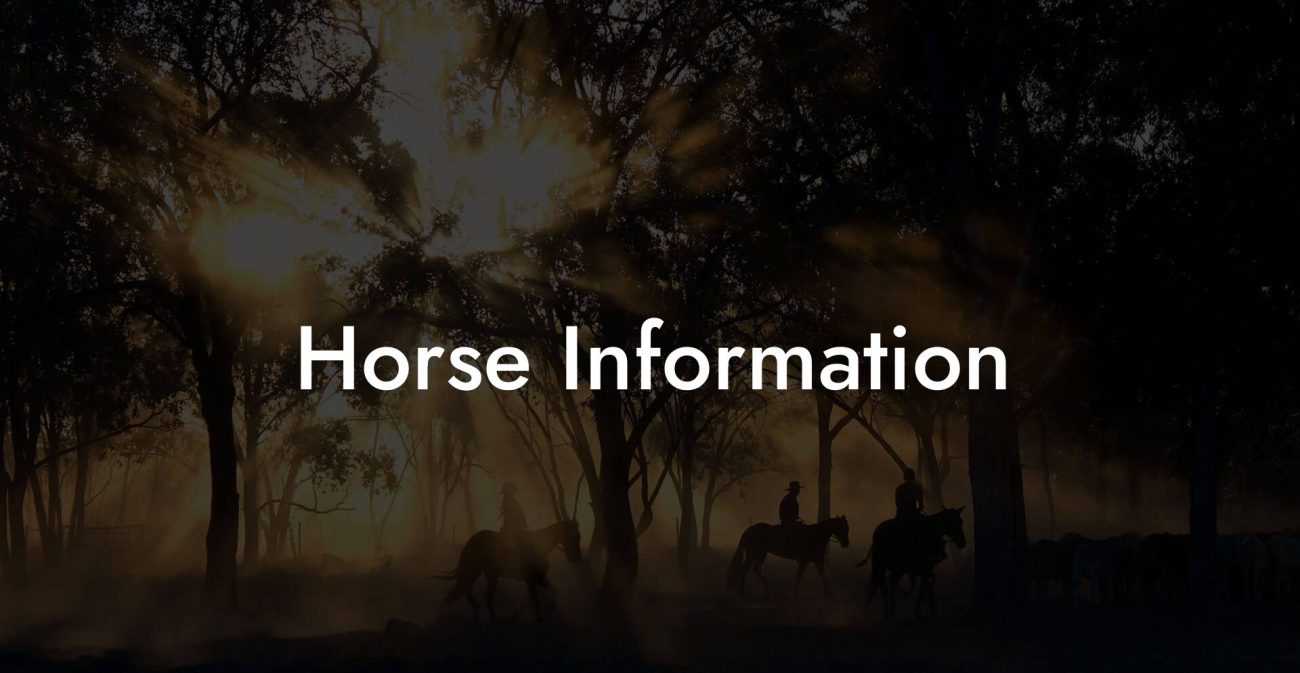There’s nothing quite like the rustic charm of a sunlit barnyard, a gentle whicker in the background, and a bales-of-hay aroma that instantly transports you into the world of equine care, where quality hay isn’t just cow fodder but a VIP ticket to your horse’s vibrant health. Dive into the ins and outs of horse hay with us as we explore everything from the granular differences between timothy and alfalfa to nifty tips on storage, feeding guidelines, and how to spot subpar hay before it messes up your horse’s day. Get ready to embrace an equestrian lifestyle that’s as fresh, bold, and genuine as your favorite Gen-Z playlist.
Quick Links to Useful Sections
- Understanding Horse Hay: More Than Just Grass
- The Nutritional Role of Hay in Equine Health
- Exploring the Types of Hay: From Timothy to Alfalfa
- Why Quality Horse Hay Matters
- How to Choose the Best Hay for Your Horse
- Evaluate the Visual Quality
- Test the Moisture Content
- Consider the Type and Stage of Maturity
- Source Responsibly
- Feeding Guidelines: Serving Up Hay the Right Way
- Establish a Regular Feeding Routine
- Controlling Portions
- Supplementing with Water and Minerals
- Storage and Handling: Keeping Your Hay Fresh and Flavorful
- Ensure a Dry, Well-Ventilated Environment
- Keep Pests at Bay
- Rotate Your Hay Stock
- Nutritional Breakdown: Fiber, Protein, and the Perfect Balance
- Common Mistakes and How to Dodge Them
- Overfeeding or Underfeeding Hay
- Ignoring the Quality Check
- Poor Storage Practices
- Overlooking Seasonal Variations
- Sustainable Hay Production and Environmental Considerations
- Emerging Trends in Equine Hay Research and Industry
- Case Studies: Real-World Success with Quality Horse Hay
- Case Study 1: Revitalizing a Veteran Show Horse
- Case Study 2: A New Foal’s Journey to Health
- Case Study 3: Tackling Allergies with Smart Hay Selections
- Integrative Approaches for Holistic Equine Nutrition
- How to Transition Your Horse to a New Hay Regimen
- Step 1: Mix and Match
- Step 2: Monitor Health Indicators
- Step 3: Adjust Based on Activity Levels
- Resources and Community Support: Your Next Steps
- Your Journey to Equestrian Excellence
- Horse Hay FAQs: Your Questions Answered
- Embrace the Journey: Innovate, Feed, and Flourish
Understanding Horse Hay: More Than Just Grass
Horse hay forms the nutritional backbone of equine care and wellness, serving both as a primary source of energy and as a fiber-rich food that aids in digestion. Unlike the stereotypical view that hay is merely dried grass tossed into a barn, high-quality hay is a scientifically curated commodity with nuances in fiber, protein, moisture content, and digestibility. Think of it like choosing between an artisanal farm-to-table salad and a wilted fast-food lettuce, your horse’s health rests on these details!
For millennial and Gen-Z equestrians, understanding the science behind hay isn’t just about ensuring balanced nutrition; it’s about connecting with a wholesome, sustainable lifestyle and even making eco-friendly choices. Whether you’re a seasoned rider or a first-time horse owner, knowing how hay influences digestive health, overall energy, and performance empowers you to make smarter, more informed decisions.
In this guide, we’ll break down every facet of horse hay, including how it’s grown, harvested, stored, and ultimately, how it plays a critical role in maintaining your horse’s physical and emotional well-being.
The Nutritional Role of Hay in Equine Health
Hay is the cornerstone of a horse’s diet, primarily providing vital fiber that supports gut motility and overall digestive health. Unlike many other domestic animals, horses are natural grazers who thrive on continuous, low-calorie intake. High-quality hay helps mimic their natural grazing behavior, keeping their digestive systems active and preventing common ailments like colic and gastric ulcers.
By delivering a balanced supply of energy through slowly digestible fiber, hay also helps regulate blood sugar levels and offers long-lasting fuel for both work and play. For active horses and performance athletes alike, the extended energy release provided by hay is a game changer. When paired with strategic feeding practices and proper supplementation, hay can elevate your horse's stamina, reduce stress, and even promote a shiny, healthy coat.
In essence, horse hay isn’t just “feed” – it’s a well-researched ingredient tailored to optimize digestive efficiency and ensure your equine companion stays at peak performance, both in the arena and in everyday life.
Exploring the Types of Hay: From Timothy to Alfalfa
Not all hay is created equal. Depending on your horse’s age, workload, and specific health needs, various types of hay offer unique nutritional profiles:
- Timothy Hay: Often the go-to choice for mature horses, timothy hay is low in protein and calcium, making it ideal for maintaining a balanced diet. Its long, coarse fibers support dental health, helping to naturally clean teeth as your horse chews.
- Alfalfa Hay: Richer in protein and calcium, alfalfa hay is frequently recommended for young, growing horses or lactating mares. However, due to its high caloric content, temper the intake for less active or overweight horses.
- Orchardgrass Hay: With a milder taste and soft texture, orchardgrass is a fantastic alternative for horses that are picky eaters. Its balanced nutrient profile means fewer dramatic shifts in energy levels.
- Bermuda Hay: Popular in warmer climates, Bermuda hay provides an excellent balance of fiber and protein, though proper handling is essential since it can sometimes be dusty.
- Clover Hay: A less common option, clover hay is packed with vitamins and minerals. Many owners appreciate its sweet aroma and nutritional boost, though it must be fed in moderation because of its higher sugar content.
The key is to understand that each type of hay serves a distinctive purpose, whether you’re looking to sustain a high-energy performance routine or manage a delicate digestive equilibrium. Always consider your horse’s unique requirements when selecting hay.
Why Quality Horse Hay Matters
Quality hay is akin to premium fuel in your car: it determines how smoothly your horse’s digestive engine runs. Inferior hay can carry mold spores, dust, and even harmful toxins that risk respiratory problems and digestive upsets. When investing in hay, pay close attention to color, smell, and moisture levels. Fresh, high-quality hay typically exhibits a vibrant green hue (if cut young enough) or a rich golden-brown shade if cured perfectly, and it carries an earthy, pleasant odor, not the musty scent of neglect.
For those new to the equestrian scene, imagine your hay as a holistic blend of nutrients that sustains your horse’s overall vigor. Consistent access to quality hay not only fuels the body but also supports mental well-being by instilling routine and stability.
So, while it might be tempting to cut corners on cost, investing in top-tier hay is an essential element of responsible horse care, one that ultimately pays off in better health, energy, and performance.
How to Choose the Best Hay for Your Horse
Selecting the right hay for your horse is a blend of art and science, demanding a keen eye for detail and a willingness to learn. Here are some practical tips to help you make the smartest selection:
Evaluate the Visual Quality
Before making a purchase, take a close look at the hay. The best hay should have a uniform color and texture with minimal dust or mold. Avoid hay that smells sour or overly musty, as this is often an indicator of spoilage.
Test the Moisture Content
Moisture matters! Hay that retains too much moisture is prone to developing mold, but overly dry hay loses vital nutrients. The ideal moisture level should be balanced, like a perfectly tuned Instagram aesthetic.
Consider the Type and Stage of Maturity
Different horses require different hay types. For instance, a high-performance athlete might need a protein-rich variety, whereas older horses may benefit more from a low-calorie, high-fiber option. Speak with a trusted equine nutritionist to tailor your choice.
Source Responsibly
With increasing consumer awareness, many suppliers now prioritize sustainable and ethically produced hay. Seek out local farms that adhere to organic practices. Not only does this benefit your horse, but it also supports community sustainability.
Remember that your horse’s dietary needs are as unique as their personality. A little extra research goes a long way in ensuring that the hay you select is nothing short of exceptional.
Feeding Guidelines: Serving Up Hay the Right Way
When it comes to feeding your horse, consistency and timing are key. Horses naturally graze for several hours a day, so consider incorporating a schedule that mirrors their innate eating habits. Here are some important guidelines:
Establish a Regular Feeding Routine
Try to serve your horse hay at consistent intervals. By maintaining a regular feeding time, you help prevent overeating and reduce the risk of digestive issues. Think of it as syncing your daily planner – a predictable schedule can work wonders for equilibrium.
Controlling Portions
Even though hay is the foundation of your horse’s diet, balanced portions matter. Overfeeding can lead to weight gain and metabolic issues, while underfeeding may starve your equine friend of essential nutrients. Consult your equine nutritionist to determine the optimal daily intake for your horse based on its age, weight, and activity level.
Supplementing with Water and Minerals
High-quality hay is best enjoyed alongside ample water and essential mineral supplements. Fresh, clean water is a must-have, especially on hot days. Consider adding a salt block or mineral licks to your feeding station to ensure that your horse’s dietary needs are fully met.
Adopting a mindful approach to feeding not only keeps your horse’s digestive system in check but also contributes to overall energy and vitality. A consistent, well-planned routine reinforces good health, making every meal a moment of well-deserved nourishment.
Storage and Handling: Keeping Your Hay Fresh and Flavorful
Even the best hay can falter if not stored properly. Humidity, dust, and pests are the arch-nemeses of perfectly cured hay. For young, tech-savvy horse owners, think of hay storage as curating your favorite vintage sneakers, handle with care and keep it in pristine condition!
The following best practices will help you maintain the quality of your hay:
Ensure a Dry, Well-Ventilated Environment
Always store hay in a dry, well-ventilated area to prevent mold growth. If possible, invest in a dedicated barn or a well-constructed shed that minimizes exposure to rain and high humidity.
Keep Pests at Bay
Pests like rodents and insects can quickly compromise your hay quality. Seal storage areas properly and consider periodic professional inspections to catch any infestations early.
Rotate Your Hay Stock
Practice the “first in, first out” principle. Using older hay first minimizes waste and ensures that every bale is at its peak nutritional value when fed.
By paying attention to these details, you can transform hay storage from a mundane chore into an integral part of your horse’s overall health strategy.
Nutritional Breakdown: Fiber, Protein, and the Perfect Balance
When dissecting the nutritional profile of hay, fiber stands front and center. As the primary component of a grazing horse’s diet, fiber is essential for maintaining a healthy digestive tract. But it doesn’t stop there, protein, vitamins, and minerals also play critical roles.
Fiber: The unsung hero in your horse’s diet, fiber improves gut motility and reduces the risk of colic. High-quality hay typically contains a rich blend of long fibers that support chewing and prevent dental issues.
Protein: Depending on the hay type, protein levels vary significantly. While alfalfa hay packs a substantial protein punch, making it ideal for growing foals and lactating mares, timothy and orchardgrass offer moderate levels that help maintain muscle mass without excess calories.
Vitamins and Minerals: Hay also provides essential micronutrients like calcium, phosphorus, and trace minerals. These elements support bone health, muscle function, and even repair tissue damage. A balanced hay diet not only fuels daily energy needs but also ensures long-term skeletal and overall health.
Considering these elements when choosing your horse hay is like assembling the perfect playlist, it’s all about balance. Too much of one nutrient can upset the harmony, so always aim for a blend that aligns with your horse’s specific dietary requirements.
Common Mistakes and How to Dodge Them
Even experienced horse owners can stumble into a few hay-related pitfalls. By highlighting common mistakes, we hope to save you time, money, and a few hairy moments in the stall:
Overfeeding or Underfeeding Hay
It may seem counterintuitive, but both overfeeding and underfeeding hay can have detrimental effects. Overfeeding may lead to obesity and metabolic disorders, while underfeeding can cause digestive disturbances and nutrient deficiencies. Keep that portion control in check!
Ignoring the Quality Check
Never settle for hay that appears dusty, moldy, or off-smelling. Your keen eye for detail is your greatest ally in determining what’s good and what’s garbage. Making quality checks a habit can prevent costly health issues down the road.
Poor Storage Practices
Storing hay in damp or poorly ventilated areas is a recipe for disaster. Dust, mold, and pests can quickly turn quality hay into a health hazard, so invest in the right storage solutions.
Overlooking Seasonal Variations
Seasonal shifts can affect hay quality dramatically. For instance, spring-harvested hay might differ in nutritional density compared to hay produced in late summer. Keep tabs on these variations and adjust your feeding strategy accordingly.
By steering clear of these common mistakes, you’re not just preserving hay, you’re protecting your horse’s health, ensuring that each bite offers the nutritional boost it’s meant to deliver.
Sustainable Hay Production and Environmental Considerations
In this era of climate consciousness, the origins of your horse’s hay matter more than ever. With a growing focus on sustainability, many farms are adopting eco-friendly practices that promote soil health, reduce chemical inputs, and minimize environmental impact.
Supporting sustainable hay producers not only safeguards the planet but also boosts your horse’s diet with hay free from harmful chemical residues. Local, organic hay options often feature naturally balanced nutrition, ensuring that your equine friend consumes food that’s as good for the Earth as it is for their insides.
Embracing an eco-conscious approach to hay selection is a win-win: you invest in your horse’s health while championing practices that contribute to a healthier, more sustainable future. It’s like giving Mother Earth a high-five!
Emerging Trends in Equine Hay Research and Industry
The science behind horse hay is evolving as fast as our favorite streaming trends. Researchers are diving deep into optimizing hay moisture levels, understanding the impact of different grasses on gut microbiota, and even developing innovative treatments to enhance hay digestibility.
One exciting trend involves advanced testing methods that assess hay quality at a molecular level. These tests help identify the ideal nutrient profiles and potential contaminants, ensuring that the hay on your barn floor is nothing short of extraordinary. As technology integrates with agriculture, the future promises hay that’s tailored to the specific metabolic demands of individual horses.
Additionally, new storage techniques, such as vacuum-sealed bales and bioactive packaging, are emerging to combat spoilage and environmental degradation. Keeping up with these trends not only enhances your horse’s dining experience but also underscores your commitment to progressive, sustainable practices.
Case Studies: Real-World Success with Quality Horse Hay
Nothing cements a concept better than real-life success stories. Let’s dive into a few case studies where equine owners witnessed transformative changes by prioritizing high-quality hay:
Case Study 1: Revitalizing a Veteran Show Horse
Bella, a veteran show horse known for her graceful performances, began experiencing vague signs of lethargy and minor digestive issues. Her caretaker, a forward-thinking millennial rider, switched Bella’s diet to a blend of premium timothy hay and a controlled amount of alfalfa. Within weeks, Bella’s coat became shinier, her energy levels soared, and she regained her competitive edge on the show ring. The secret? Consistent, top-tier hay balanced with the right nutritional supplements.
Case Study 2: A New Foal’s Journey to Health
When a spirited newborn foal named Rusty entered the scene, his young digestive system required maximum care. The decision was made to introduce clover and orchardgrass hay slowly, paired with carefully measured supplements. Over time, Rusty displayed remarkable growth, improved digestive function, and an exuberant playfulness that charmed everyone at the stable. This success story highlights the importance of age-appropriate hay choices.
Case Study 3: Tackling Allergies with Smart Hay Selections
For Daisy, a high-spirited mare battling seasonal allergies, switching her hay source made all the difference. Traditional hay induced mild respiratory issues, so her owner transitioned to a hypoallergenic variety sourced from an organic, local farm. The change led to fewer respiratory flare-ups and an overall improvement in Daisy’s vitality, proving that quality and source matter when it comes to sensitive equine systems.
These case studies perfectly illustrate how meticulous hay selection can lead to tangible differences in health, performance, and overall happiness for horses across all ages and stages.
Integrative Approaches for Holistic Equine Nutrition
In today’s holistic world, caring for your horse goes beyond just meeting its basic dietary needs. Integrative equine nutrition combines quality hay with complementary feeding strategies, environmental enrichment, and even mindfulness for you as an owner. This approach redefines equine care by treating every aspect, from nutrition and exercise to the emotional well-being of the rider, as part of a synchronized ecosystem.
Complementary Supplements: High-quality hay lays the foundation, and supplements like probiotics, omega fatty acids, and herbal blends can further enhance your horse’s digestive health and immune function.
Holistic Feeding Practices: Introducing periodic grazing sessions in lush pastures or rotational grazing can mimic natural foraging behaviors, reducing boredom and supporting mental well-being. Incorporating short breaks between hay feedings and fresh water play a crucial role as well.
Mindful Equine Care: While your horse is busy munching on hay, take a moment to connect with it on a deeper level. Mindful grooming sessions, gentle massages, and even calming music can lower stress hormones in both you and your horse, creating a harmonious cycle of health.
Integrative care is about looking at the bigger picture, recognizing that your horse’s overall happiness and performance are influenced by a carefully curated diet combined with a nurturing environment.
How to Transition Your Horse to a New Hay Regimen
Changing your horse’s diet can feel as momentous as switching up your smartphone’s operating system. The key to a smooth transition is a gradual process that respects the sensitivity of your horse’s digestive tract. Here’s how to do it right:
Step 1: Mix and Match
Begin by blending a small percentage of the new hay with the old. Over the course of 7 to 10 days, slowly increase the ratio of the new hay while decreasing the old. This gradual transition minimizes digestive upsets and allows your horse’s gut flora to adapt seamlessly.
Step 2: Monitor Health Indicators
Keep a close eye on your horse’s appetite, stool consistency, and overall behavior during the transition. Any sign of discomfort may indicate that the change is progressing too quickly.
Step 3: Adjust Based on Activity Levels
Consider your horse’s daily workload and energy expenditure when planning the transition. Active horses may benefit from a more nutrient-dense hay variety, while older or less active horses might do better with a lower-calorie alternative.
With patience and careful observation, transitioning to a new hay regimen can lead to long-term benefits, from improved digestion to an overall boost in vitality.
Resources and Community Support: Your Next Steps
Taking care of your horse’s hay diet is a journey, not a destination. Thankfully, you’re not in it alone. There are countless resources available, from local equine nutrition workshops and online forums to expert consultations at specialty feed stores. Connect with like-minded owners on social media platforms, attend webinars hosted by equine nutritionists, and explore blogs that offer firsthand insights.
Engage with your local community through riding clubs, feed cooperatives, or even small, grassroots meet-ups. These communities often share tips on accessing organic, locally produced hay and overcoming common challenges in horse care. By building a network of trusted sources, you ensure that every bale you feed your horse contributes to a sustainable, healthy future.
Your next steps might include reaching out to local agricultural extension services, subscribing to equine nutrition newsletters, or even participating in online discussion groups dedicated to natural horse care. The wealth of knowledge available is staggering, and each connection you make brings you one step closer to mastering the art of equine nutrition.
Your Journey to Equestrian Excellence
Embracing the world of horse hay isn’t merely about feeding your horse, it’s a celebration of the art and science behind equine nutrition. It’s about understanding that every bale of hay, every measured scoop, and every thoughtful feeding routine contributes to a vibrant, energetic companion in your life.
Whether you’re updating your stable’s feed inventory, transitioning to organic hay, or exploring integrative nutritional practices, remember that you’re investing in a lifestyle that reflects care, thoughtfulness, and a genuine connection to nature. Each step you take, from meticulously checking moisture levels to engaging with a community of passionate horse enthusiasts, adds to the mosaic of knowledge that supports your horse’s overall well-being.
Your journey to equestrian excellence is uniquely yours. Enjoy every moment, from the first whiff of fresh hay to the satisfied neigh of a happy, healthy horse. With passion, research, and a touch of humor, you’ll soon discover that quality hay is not just food, it’s the heartbeat of sustainable, balanced equine care.
Horse Hay FAQs: Your Questions Answered
Here are some frequently asked questions that dive into the nitty-gritty of horse hay, its benefits, and how to ensure your horse is getting the best quality nutrition.
1. What exactly is horse hay, and why is it important?
Horse hay is dried forage, typically grasses or legumes, that provides essential fiber and nutrients for a horse’s digestive health. It is crucial because horses are natural grazers, and hay helps mimic their natural eating patterns while ensuring they receive a balanced diet.
2. How can I tell if hay is of good quality?
Look for hay that has a uniform color, minimal dust or mold, and a pleasant, earthy smell. The moisture content should be appropriate to avoid spoilage, ensuring that the hay remains nutrient-dense.
3. Is timothy hay better than alfalfa hay?
Not necessarily, it depends on your horse’s needs. Timothy hay is lower in protein and calories, ideal for maintenance and mature horses, while alfalfa hay, being richer in protein and calcium, is often recommended for young, growing horses or those with higher energy requirements.
4. How should I transition my horse to a new type of hay?
Gradually mix the new hay with the old over 7-10 days to allow your horse’s digestive system to adjust to the change. Monitor health indicators and adjust the ratio slowly to ensure a smooth transition.
5. What storage practices help maintain hay quality?
Store hay in a dry, well-ventilated area, away from moisture and pests. Use the “first in, first out” method to rotate stock and prevent spoilage.
6. Are there sustainable options for purchasing horse hay?
Yes, many local and organic farms now offer sustainably produced hay. Look for suppliers who use eco-friendly and ethical farming practices.
7. Can I mix different types of hay for my horse?
Absolutely. Combining different types of hay can help balance nutrients and offer variety. Consult with an equine nutritionist for advice tailored to your horse’s dietary needs.
8. What role does hay play in preventing digestive issues?
High-quality hay provides essential fiber that supports gut motility and prevents common digestive problems such as colic and gastric ulcers.
9. Is it necessary to supplement hay with other feeds?
Depending on your horse’s energy requirements and overall diet, you might need to supplement with grains, minerals, or vitamins. Always consult with a nutrition expert to create a balanced feeding plan.
10. How can I stay updated on the latest trends in horse hay production?
Follow reputable equine nutrition blogs, subscribe to industry newsletters, and join online forums or local equestrian clubs where professionals share insights and innovations.
Embrace the Journey: Innovate, Feed, and Flourish
It’s time to reimagine horse care as not just an obligation but as a dynamic, rewarding adventure. By investing in quality hay, curating a balanced diet, and tapping into holistic, innovative practices, you’re setting the stage for your horse to thrive in every aspect of life.
Every bale, every meal, and every careful observation contribute to a story of transformation where your horse becomes a living testament to the power of premium nutrition. Maintain your enthusiasm, embrace emerging trends, and continue seeking out reliable resources, because in the world of equine nutrition, every enlightened choice makes a difference.
As you navigate your path toward equestrian excellence, remember that your vet, your local nutrition experts, and fellow horse enthusiasts are all part of your support network. Keep the conversation going, share your experiences, and let your passion for quality care shine through every barnyard moment.
From the vibrant hues of freshly cut hay to the hum of a contented, healthy horse, every aspect of your journey speaks to a future where care, creativity, and sustainability are in perfect harmony. Step confidently into this exciting realm, and let each day be a celebration of the bond you share with your majestic companion.













